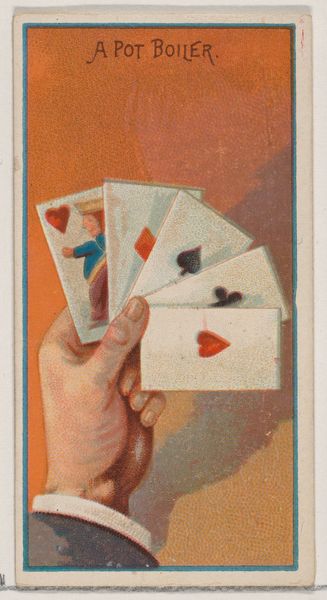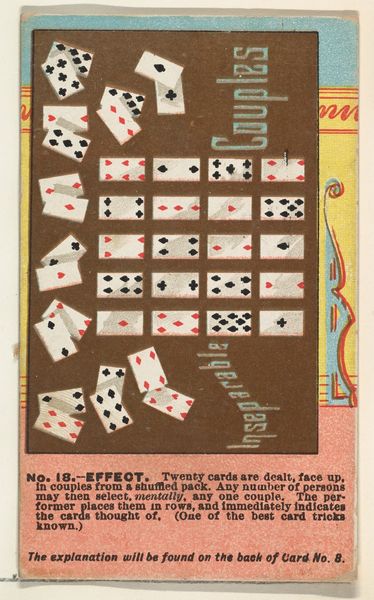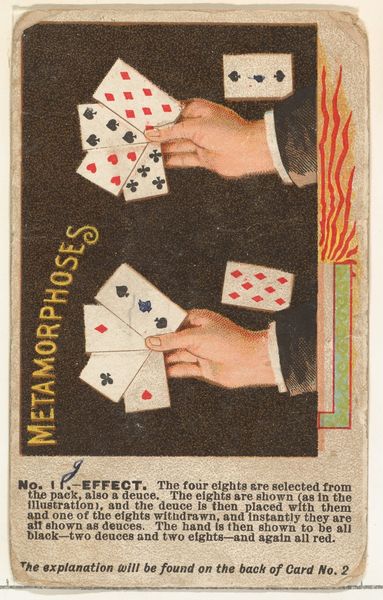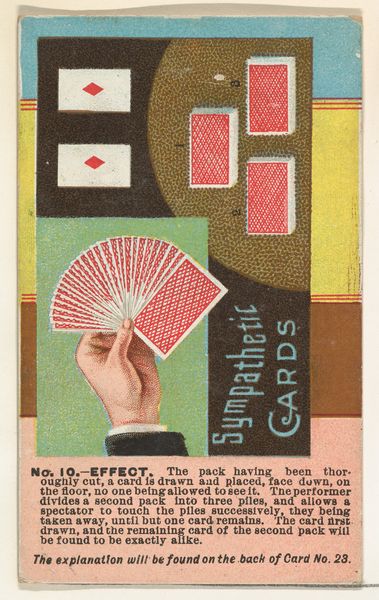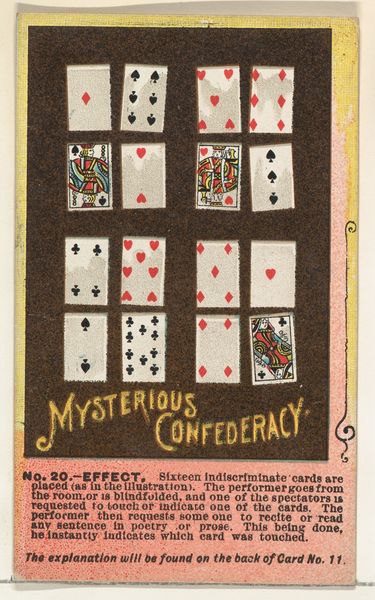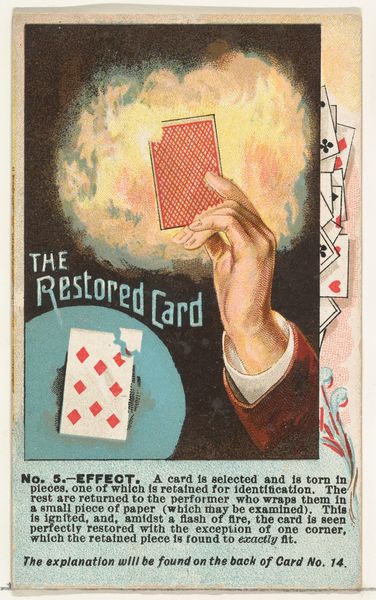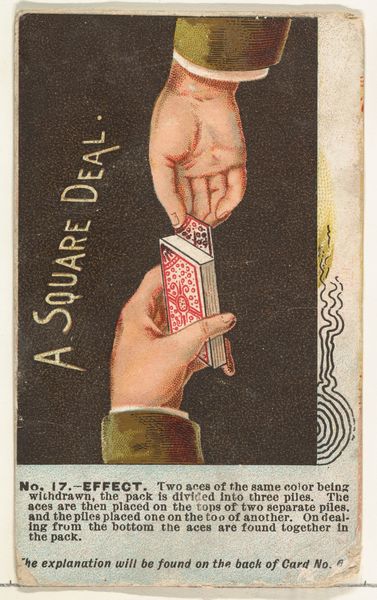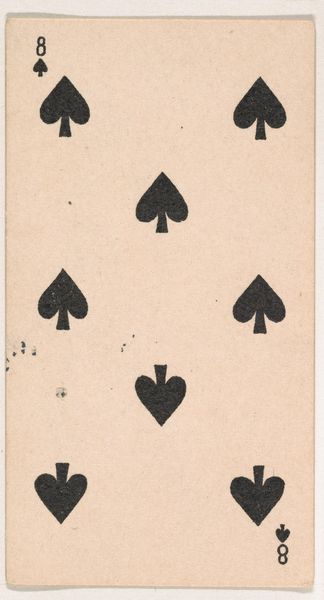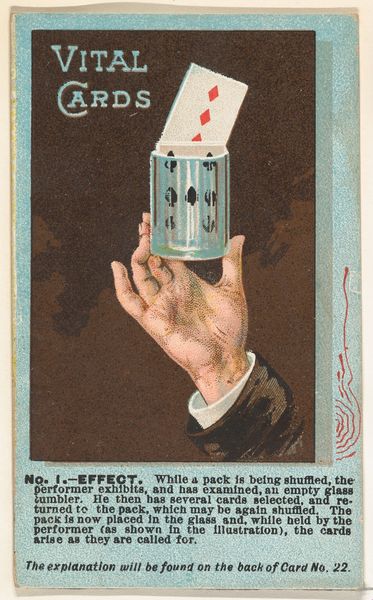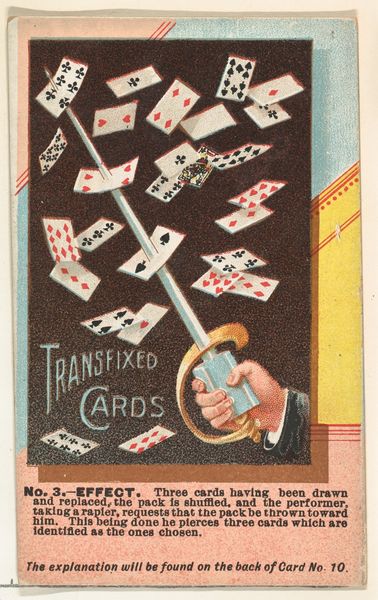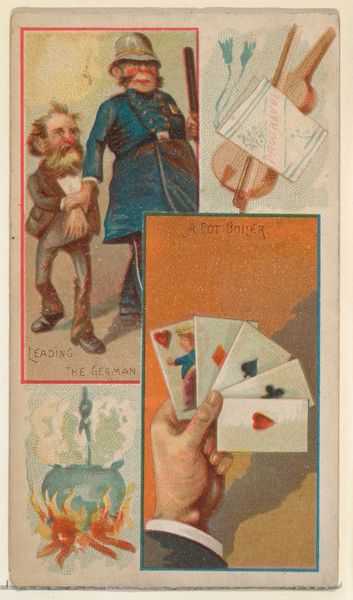
Number 13, Electrified Cards, from the Tricks with Cards series (N138) issued by W. Duke, Sons & Co. to promote Honest Long Cut Tobacco 1887
0:00
0:00
drawing, graphic-art, print, poster
#
drawing
#
graphic-art
# print
#
coloured pencil
#
poster
Dimensions: Sheet: 4 3/16 × 2 1/2 in. (10.6 × 6.4 cm)
Copyright: Public Domain
Editor: This is "Number 13, Electrified Cards" from 1887, a print made by W. Duke, Sons & Co. as an advertisement. It depicts a hand magically lifting a stack of cards, which is pretty whimsical! What can you tell me about this image? Curator: This card speaks volumes about the commercial art world of the late 19th century. Tobacco companies like Duke were major patrons of the arts, in a way, using images like this to create brand awareness and, ultimately, cultural capital. These cards circulated widely, essentially functioning as mini, mobile billboards within a rapidly industrializing society. Do you notice how the card is attempting to demystify the trick, explaining away any sense of magical process, for a purely mechanical explanation? Editor: I do. So, it's like they’re selling the *idea* of magic more than the actual product? And if everyone has these cards with instructions on card tricks then the magic trick doesn’t belong to an exclusive social group anymore? Curator: Precisely! This is about democratizing a sense of wonder and excitement but primarily about boosting sales through popular culture. The image's design, typography, and distribution strategy are all carefully calibrated to appeal to a mass audience, reinforcing the idea that anyone can participate in this ‘electrified’ excitement. Look at the composition – the clear, concise instructions. Editor: It is interesting to think of advertising as shaping culture itself, not just reflecting it. Curator: Indeed. Pieces like this reveal how art and commerce were becoming deeply intertwined, creating a visual language that would come to define consumer culture, influencing artistic movements like Pop Art, and even contemporary art marketing strategies that persist to the present day. Editor: I’ve definitely learned to consider these unassuming objects as significant documents in the history of consumerism and the industrial era! Thank you!
Comments
No comments
Be the first to comment and join the conversation on the ultimate creative platform.
